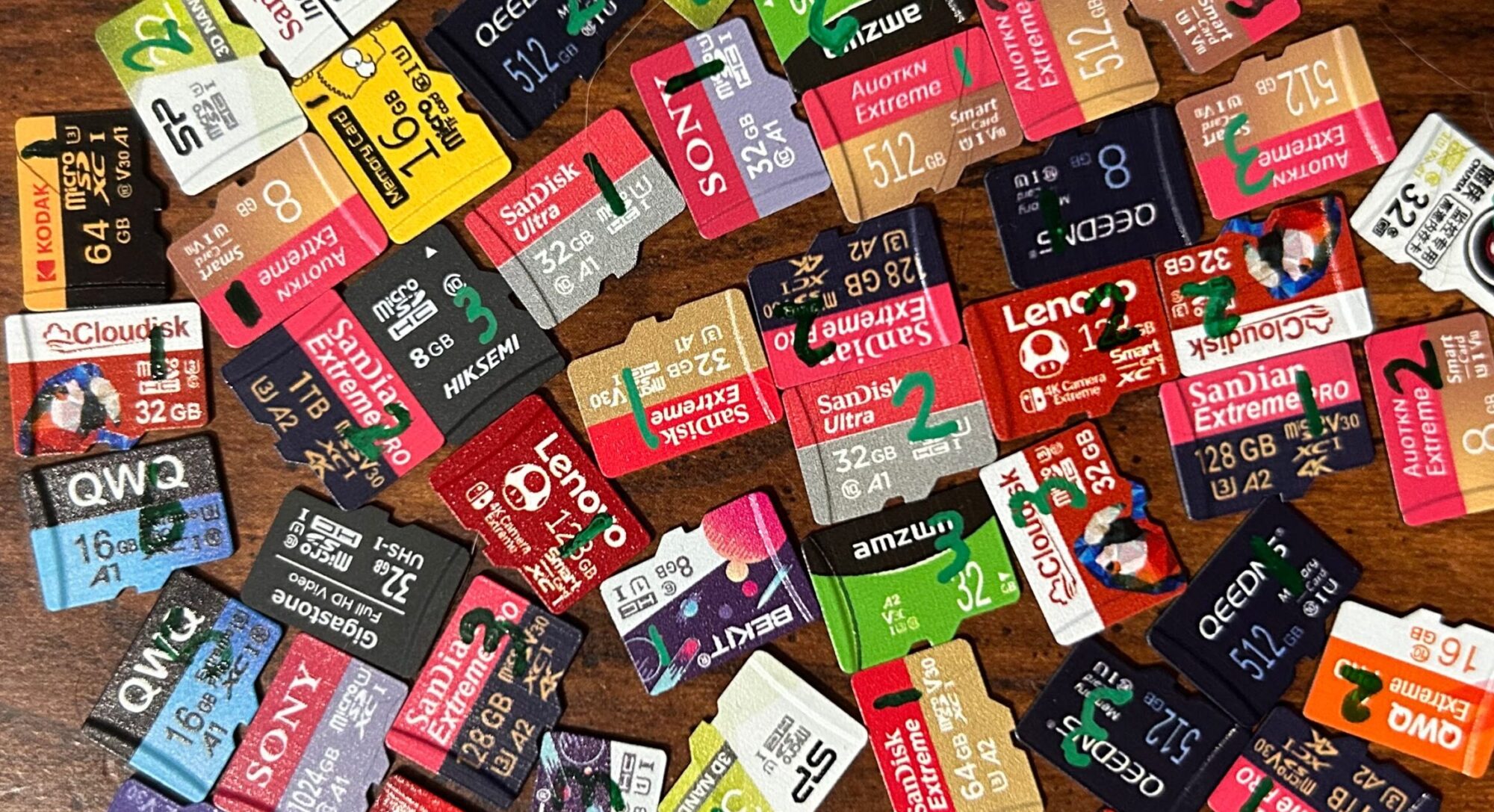Lexar started off life as the flash memory division of Cirrus Logic before being spun off into its own company in 1996. They were purchased by Micron in 2006, who continued to develop and sell flash memory products under the Lexar name until they sold the brand name and trademark rights to Chinese manufacturer Longsys in 2017. However, during the intervening years, Lexar made a name for themselves in the US market (for good or for worse, depending on your opinion of them). Because of this, I’ve labelled their cards as “name-brand” in my results.
The first Lexar cards that I purchased for this survey were the Lexar Professional 1000x 64GB’s — which I did not have a good experience with (see that card’s page for more info) — but those cards were pretty old and predated Lexar’s sale to Longsys, so I wanted to include at least one other (more current) Lexar card to see if that would balance out Lexar’s reputation as a whole.
There was one particular data point that struck me as odd: the manufacturer ID. None of the sources I looked at listed manufacturer ID 0xad as belonging to Lexar — or anyone at all. This manufacturer ID is shared by a few other brands in my collection: Amazon Basics, Chuxia, OV, and Raspberry Pi. In fact, all of these cards not only had the same manufacturer ID, but also the same OEM ID (0x4c53). While this is sometimes indicative of fake flash or poor quality flash, I didn’t see any other signs indicating that the card is fake — capacity was as advertised, and printing (on both the card and the packaging) was clear and high quality. The markings on the back of the card appear to have been printed on — as opposed the Lexar Professional 1000x 64GB, where it appears the markings were laser-etched — but this is about the only inconsistency I could spot off the bat. I think that the more mundane explanation here — given the fact that 0x4c53 in ASCII is LS — is that manufacturer ID 0xad is assigned to Longsys, and that Longsys chose to use their own manufacturer ID with these cards instead of acquiring manufacturer ID 0x28 from Micron.
Performance-wise, these cards did above average in all categories except sequential write speeds, which were slightly below average. The worst of the sequential write scores scored in the 45th percentile (as of the time of this writing). This card’s strong suit, however, seems to be random write speeds — scores ranged between the 82nd and 84th percentiles here.
These cards bear the Class 10, U1, V10, and A1 marks, and all performance measurements were good enough for it to qualify for these marks. Honestly, that’s not bad for a card that was only $1.99.
On the endurance testing front:
- Sample #1’s first error was an address decoding error during round 158; it has survived 15,272 read/write cycles so far.
- Sample #2’s first error was an address decoding error during round 268; it has survived 9,457 read/write cycles so far.
- Sample #3’s first error was — you guessed it — an address decoding error during round 2,058. It has survived 12,231 read/write cycles so far.
Overall? This was definitely not a bad card for $1.99. Sequential write scores weren’t that great, but that’s probably the worst thing I have to say about them. On endurance, they’ve done pretty well — as of the time of this writing, the average time to the 0.1% failure threshold is about 7,500 read/write cycles, and these cards have made it well past that mark and are still going strong. So…if sequential write speeds aren’t terribly important to you, and you can pick these cards up at a good price? I’d say “go for it”.
June 17, 2025 (current number of read/write cycles is updated automatically every hour)

